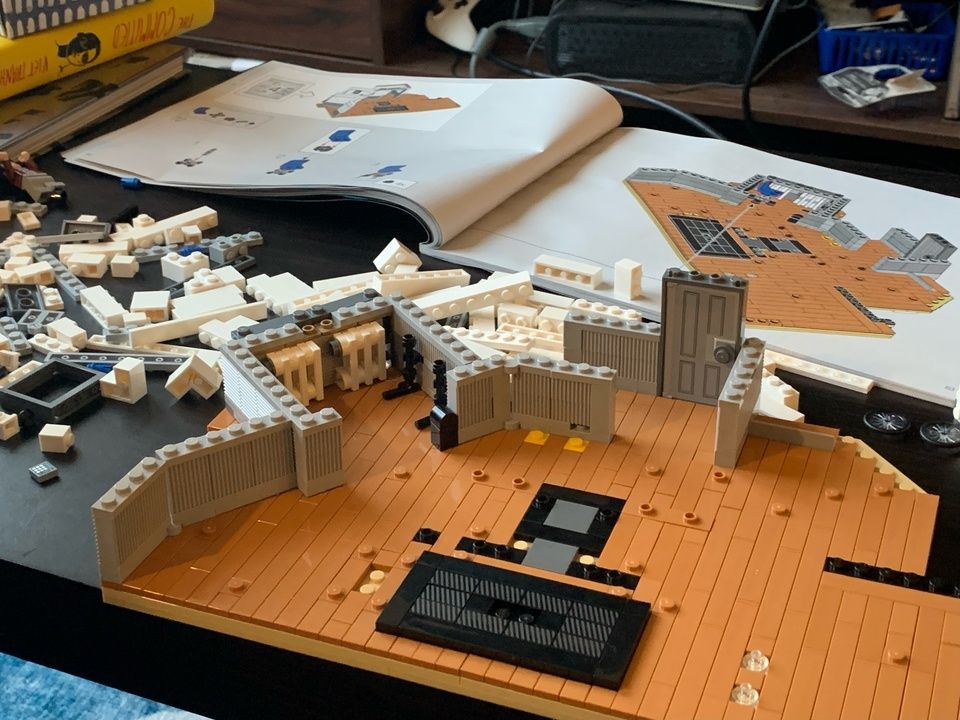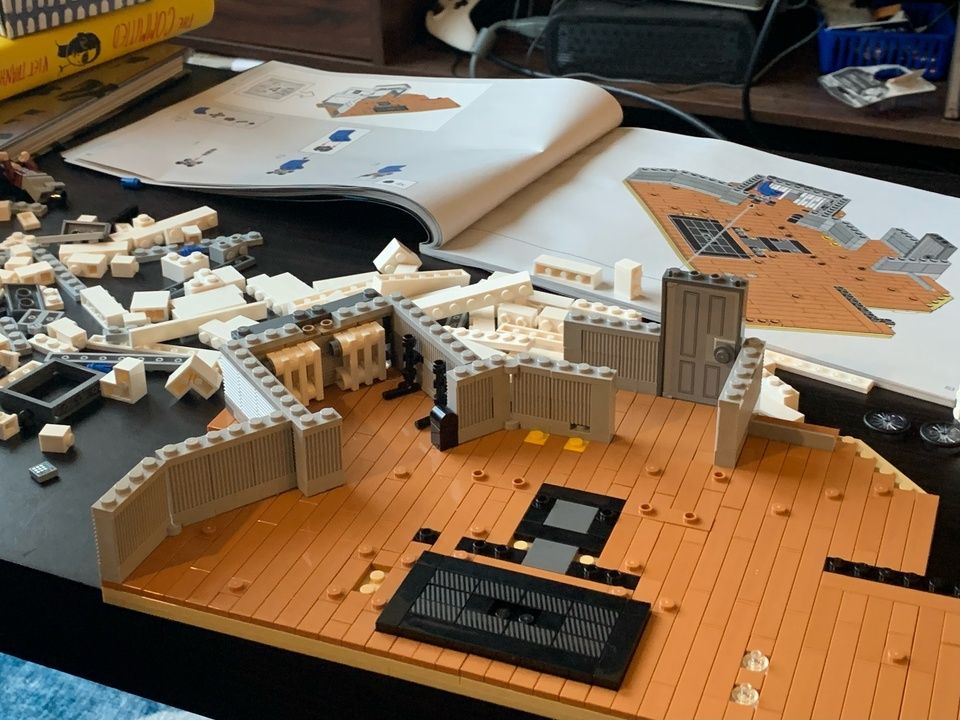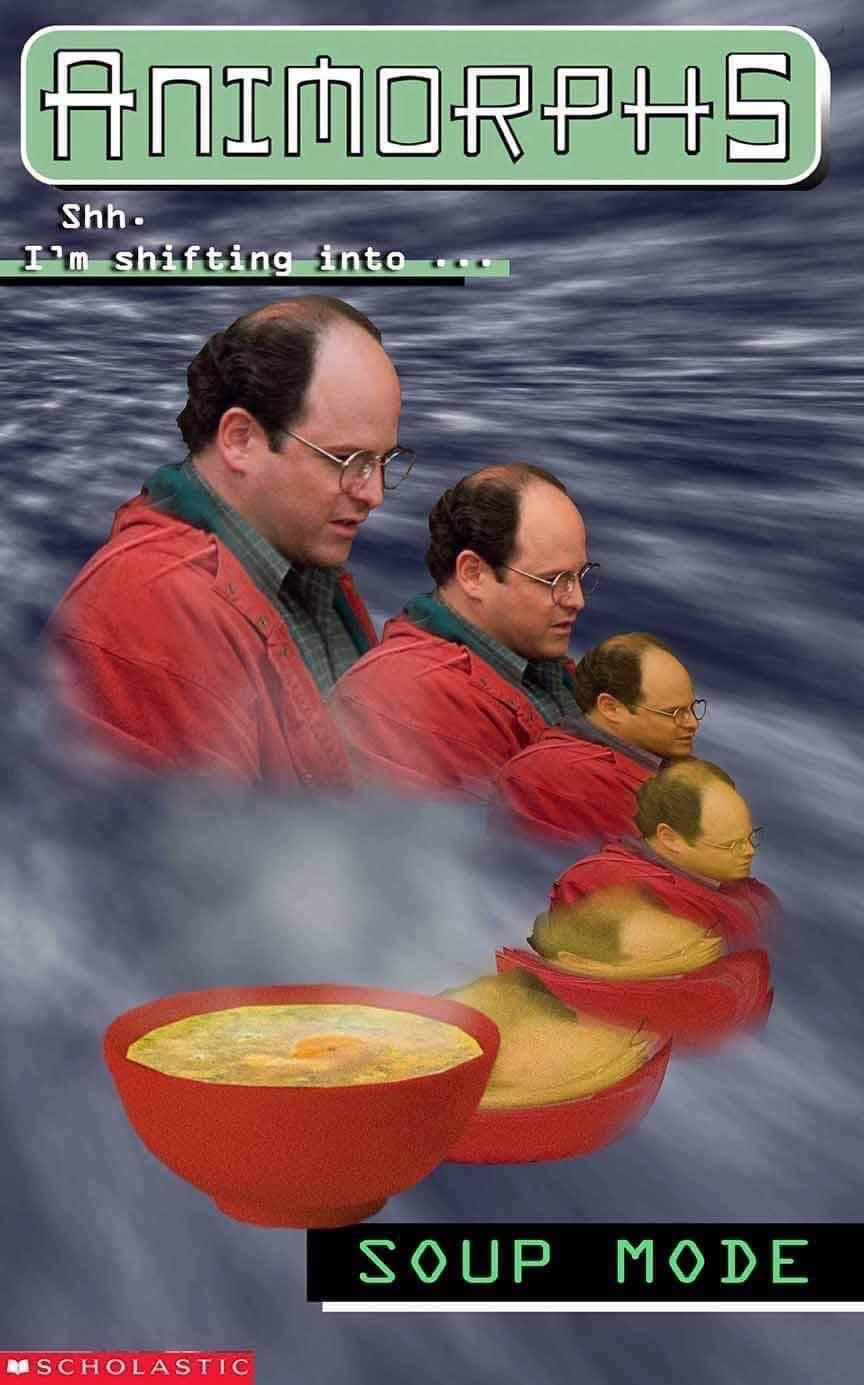Issue 58: Shifting into Lego mode

One rainy day a few weeks ago, my friend Sarah and I broke out my partner’s Seinfeld Lego set. (Let it be known that E preferred to play with the completed set and he brought us sliced apples while we assembled it.) Neither Sarah nor I had ever been big Lego people. Sure, I’ve known the cosmic pain of stepping on errant ones strewn on the floor, but I was more of a stuffed animals kid. Still, it seemed like a fun 3D puzzle, perfect for a rainy afternoon, so we got to work. As Jerry’s apartment began to take shape, brick by brick, I began to draw lines between Lego and writing.
Lego is the ultimate representation of the power of reusable components. Individual pieces can be combined in a variety of ways. Brick variation is introduced with careful consideration, driven in part by Lego’s universal design system and to simplify manufacturing. Stories and novels can similarly be thought of in this composable way. On the one hand, the building blocks of writing are literal words, but they can also be storytelling elements like plot, setting, dialogue, character, etc. There are infinite combinations of familiar things (like tropes), but each one has a drastically different result.
Speciality Lego sets have more bespoke items, for example the Seinfeld set has George’s fishing rod and a marble rye. But Lego also uses things like sticker sheets to inject uniqueness without actually creating brand new pieces. To create the artwork and books in Jerry’s apartment, we simply put stickers onto square or rectangular tiles. In writing, particularly for longer works, predictability and familiarity can be grounding elements for readers. Making a story unique doesn’t have to upend every aspect. Like Lego, it can be done in subtler ways. At the same time, being selective about the truly distinctive aspects allows them to stand out more meaningfully.

When Sarah and I began, we had to familiarize ourselves with the instruction manual and develop our own process of assembly. (We kept calling the single stud brick a “nipple” oops.) The manual was organized into sections, like chapters, and didn’t have any words, just drawings. Despite it looking like Ikea assembly instructions, it was easy to follow and didn’t over explain. Writing becomes easier when you start noticing patterns and techniques repeated in other works. Applying them in your own stories also shows how difficult it can be to execute them well. Just as we gained an appreciation for how much work went into simply making the apartment floor out of Lego, I’ve also wracked my brain for describing the most basic physical action for a character in a story. Both Lego and writing involve a continuous balance of learning and mastery.
As we made progress on each section, Sarah and I would dump out all the pieces and give each other a wary but excited look, like how the fuck is this going to work? This flood of dread and excitement is often how I feel when writing. I don’t always know how things will fit together, but I’m motivated to try. The most rewarding part is getting lost in the process.
Sometimes Sarah and I moved through the instructions too fast and found that we didn’t have the right pieces for later steps. We had to take bricks apart and pay closer attention to each piece—its orientation, how things fit together. Doesn’t that sound like editing?
The final Lego set was satisfying from multiple angles. It was cool to zoom out and see the scene as a whole, but it was equally fun to zoom in on each room and see all the little flourishes. Doors that swing on hinges, a mounted bike with real wheels you can spin. A great story is like that too. The entire work elicits one reaction, but readers can also appreciate individual scenes and sentences.
Lego and writing are deceptively simple and difficult (at the same time!), requiring patience and imagination, balancing constraints with variation. Figuring out how things come together in different ways is fun, but even more so when you have people to share it with.

my editor, gently: what did you mean by this ?
— Aamna Qureshi (@aamnaqureshi_) October 13, 2022
me, sobbing: I don’t know😭
Creative resources
- A delightful interview on creativity and the importance of play with cartoonist Lynda Barry.
- LIT FEST is a month-long literary virtual event full of workshops hosted by Defunkt’s upper staff. Individual workshops cost $10 or $85 for access to all of them.
- “The 9 Biggest Myths About Nonfiction Trade Publishing, Debunked” by Summer Brennan
- Lincoln Michel on why you need to read fiction to write fiction: “An artist needs to learn to think in the medium they are working in. Whatever that is. They need to imagine the possibilities and constraints of their medium.”
- Vauhini Vara’s thread on programs for people working on book-related projects, including those that offer mentorship, teaching, community, and manuscript edits.
Recent reads & other media
I read Love and Other Words by Christina Lauren, a great friends-to-lovers romance. Seek You by Kristen Radtke is a fascinating graphic memoir/nonfiction exploration of modern loneliness and its many facets and origins.
I’ve finally been taking advantage of more New York cultural events. A friend and I saw the New York City Ballet, for which Solange composed a song. My sister and I saw Phoebe Robinson and Hasan Minhaj at a New Yorker Festival event. We then watched Hasan Minhaj’s new Netflix special, which delved into the stakes of his comedy and the line between chasing clout and his family’s safety.
We also managed to catch the last screening of Luca Guadanigno’s coming-of-age romantic cannibal road film (Wikipedia’s summary, not mine), Bones and All, at the New York Film Festival. No other movie has left me feeling simultaneously so physically ill and impressed with its portrayals of love, acceptance, and loneliness. Definitely not for the faint-hearted or weak-stomached!
As we’re getting into peak fall, I’ve been watching the cartoon limited series Over the Garden Wall. Some friends and I had a Hocus Pocus (1 and 2) night. It was my first time seeing Hocus Pocus and I thoroughly enjoyed it. A talking black cat! A surprising amount of adult jokes! Villains you can root for! What’s not to like?
Note: Book links are connected to my Bookshop affiliate page. If you purchase a book from there, you'll be supporting my work and local independent bookstores!
~ meme myself and i ~
Being violently ripped out of lifelike dreams. It’s hard for women to work in the postal service. Look at how autumnal the world is. When you bring your parents to a fancy restaurant. Universal sign that you might make another sandwich. Trying to squeeze in all the spooky fall things you want to do.

